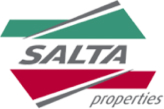A salvage is the collection and study of cultural heritage materials from a site following archaeological methodology. It is done when the activity will potentially impact the cultural heritage within the area. There are multiple ways in which salvages can be completed, requiring their own methodologies based on the size and best practice for the site.
Archaeological Salvage FAQs
When is Archaeological Salvage required?
After the CHMP has been submitted, salvages can be requested by the Registered Aboriginal Party (RAP) whose land the activity area is on.
How is Archaeological Salvage done?
The three salvage forms are surface, manual and mechanical. The size and methodology to be followed are described in the CHMP conditions.
Surface salvages involve retrieving artefacts from the surface of the site. No sub-surface excavation is done.
Manual salvages involve retrieving artefacts and culturally sensitive materials from the sub surface without mechanical means. This is done through staggered pits located where artefacts are predicted to be. This can be completed by our archaeologists and heritage advisors.
Mechanical salvages involve the use of heavy machinery and operators to cover large activity areas quickly and effectively. This is used for sites where using manual salvaging methods would not be cost-effective or able to be completed in a timely way. Archaeological Excavations has a fleet of machinery for any size salvage needs, and trained operators to use them.
How long does Archaeological Salvage take?
This is highly dependent on the size and scope of the activity. Get in contact with our team today to get a specific timeframe for your situation.
Is an Archaeological Salvage report necessary?
Yes. Salvage reports are also produced by Archaeological Excavations. Our trained team process the salvage data and prepare the report in-house. These reports are later lodged with First Peoples State Relations.
What happens to the artefacts?
The artefacts are brought back to Archaeological Excavations, analysed, and catalogued. Once the report is complete, the artefacts are repatriated.
Projects
Below is some information on projects Archaeological Excavations has worked on
Lyndhurst
The project involved an inland port at Lyndhurst as proposed by Salta Properties. The development would bring freight from Melbourne Harbour by rail to Lyndhurst where it would then be dispatched to trucks. The project aims to solve the issue of inner-city traffic congestion and provide greater opportunities for imports and exports in the southeast of Melbourne as it provides an alternative to road-based container transfer.
Drysdale Bypass
Drysdale Bypass is Bellarine Peninsula’s biggest road infrastructure project. Running 6 km from Jetty Road to the north of Whitcombes Road, the project involved the construction of four new traffic lanes separated by a central median, along with the construction of intersections, roundabouts and traffic lights.










